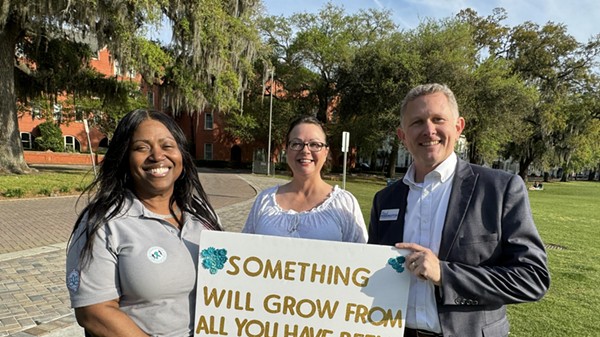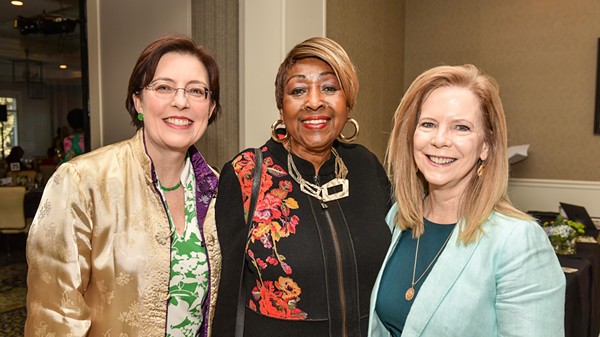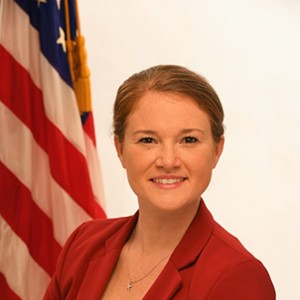Memories of Ms. Gibson
[
{
"name": "Air - MedRect Combo - Inline Content 1",
"component": "14680855",
"insertPoint": "7",
"requiredCountToDisplay": "5",
"parentWrapperClass": "fdn-ads-inline-content-block"
},{
"name": "Air - MedRect Combo - Inline Content 2",
"component": "14680856",
"insertPoint": "15",
"requiredCountToDisplay": "9",
"parentWrapperClass": "fdn-ads-inline-content-block"
},{
"name": "Air - SVP - Leaderboard - Inline Content - 2",
"component": "16852291",
"insertPoint": "10",
"requiredCountToDisplay": "10",
"parentWrapperClass": "fdn-ads-inline-content-block"
},{
"name": "Air - SVP - Leaderboard - Inline Content - 3",
"component": "16852292",
"insertPoint": "20",
"requiredCountToDisplay": "18",
"parentWrapperClass": "fdn-ads-inline-content-block"
},{
"name": "Air - SVP - Leaderboard - Inline Content - 1",
"component": "16852290",
"insertPoint": "25",
"requiredCountToDisplay": "22",
"parentWrapperClass": "fdn-ads-inline-content-block"
}
]
The last time I visited Florence Gibson she was down to one bunny rabbit. Twenty three females and one male had died. The male committed suicide when he couldnt get near the girls, she explained.
It was December and the temperature had plummeted. So Ms. Gibson moved Bunny Gal into the kitchen where a borrowed electric heater, set high on a stool to escape Bunnys curiosity, warmed the room No matter that the rest of the house, unheated, was hovering around 50. Bunny Gal came first.
After reaching into her fridge, filled with Coca-Colas, and taking out some carrots for her pet, Ms. Gibson led me outside to her woodpile. It sits in the back of her eclectic yard, beyond the terrarium, decorated with two plaster fishermen, one black, one white. Behind the side of her house she regarded as the North Pole, filled as it is with plastic penguins, a childs Santas Express and a stack of hubcaps painted white or silver. Past two plum trees, two fig trees, a pomegranate tree and several upside-down metal chairs positioned to protect next summers cucumber plants.
And not too far from the Penny Rose Memorial Garden, where her late dog Tammy is memorialized by a headstone with a telephone on top (She was so smart she answered the telephone, she told me a few years back). She mourned this dog so badly she put a notice in the newspapers obituary section.
We dragged in several good-sized pieces of timber for her wood-burning stove. The place heated up immediately, so we turned off her oven.
Then, when she told me to splash some kerosene and light a match -- and I flinched -- she said, Oh, go on now. You wont hurt yourself none.
Two months later, Ms. Gibson died. She was 94.
Hudson Hill neighbor Earl Bobby Middletown saw her the Sunday before she passed. She wanted me to build her some new shelves for her dolls, he said.
The dolls she loved to bathe and clothe in new garments. The dolls that share the living room with beads, trinkets and curios painted red that decorated the modest concrete block house she and her husband built in 1953.
Middletown, former owner of the Tina-B Tavern on Richard Street -- named after his mother -- was one of several people who would drive Ms. Gibson to Universe Trading Company on Franklin Square. Lord how she loved that place, he said. Shed never ride in the front seat though. Always in the back.
SCAD professor E. Daves Rossell would drive her there, too. Then to Thrifty Hardware store, then B&B Paint, where she always bought the same three colors: Chinese red, silver and white.
Rossell, who moved to Savannah from the west coast, teaches vernacular architecture. He discovered Ms. Gibson by driving around, looking for interesting houses. He hit the jackpot when he met her. I left her a note and she called me, he said.
They became fast friends. Rossell loved taking his classes to her garden. This, he would tell his students, their mouths hanging open at the arrangement of plastic shower hooks, yellow reflective lights and whirligigs made from discarded fan blades, is a real artist.
But an artist with a heart.
Bobby Lockett met her when he was selling cars at Southern Motors, Ms. Gibson leading the way, asking, Lockett said, for that colored salesman.
No matter that Ms. Gibson couldnt drive and her husband was blind. When the couple arrived they had a stash of $20 bills wrapped in a series of handkerchiefs, a system devised by her sightless husband.
I drove them home, Lockett recalled at last weeks funeral, Florence sat in the back as usual. I taught her to drive.
In time Ms. Gibson started calling Lockett, now chairman of the Housing Authority of Savannah and a salesman at Dan Vaden, her son. He didnt mind. Active politically, Lockett frequently brought politicians to her house.
She always asked the same thing, he said. What you gonna do for my people? She was the first to bring a brown bag of something to anyone in need, too.
She posed the same question to the late Bobby Hill and Robbie Robinson and to Diana Harvey Johnson, popular former state legislator.
She was something else, Johnson told 100 or so mourners crowded into the Michael Brown Funeral Home on Bay Street. That and a bag of potato chips. She loved to chastise Bobby for not feeding Bunny.
When the service -- the homegoing of another soldier -- was over, the procession started making its way to Evergreen Cemetery in Liberty City.
But not before driving by Ms. Gibsons corner house on Rankin Street, not far from the paper company. This is the house with the funny trinkets; the unfinished projects; the budding plum tree; the Brooklyn Bridge, the name given to a red walkway she made to cross a dip in the yard and the homemade bunny hutch, made from grates of discarded air-conditioners shed gather in the woods across the street.
Everything looked normal.
It was just a little too quiet.
Jane Fishman can be reached at [email protected]
It was December and the temperature had plummeted. So Ms. Gibson moved Bunny Gal into the kitchen where a borrowed electric heater, set high on a stool to escape Bunnys curiosity, warmed the room No matter that the rest of the house, unheated, was hovering around 50. Bunny Gal came first.
After reaching into her fridge, filled with Coca-Colas, and taking out some carrots for her pet, Ms. Gibson led me outside to her woodpile. It sits in the back of her eclectic yard, beyond the terrarium, decorated with two plaster fishermen, one black, one white. Behind the side of her house she regarded as the North Pole, filled as it is with plastic penguins, a childs Santas Express and a stack of hubcaps painted white or silver. Past two plum trees, two fig trees, a pomegranate tree and several upside-down metal chairs positioned to protect next summers cucumber plants.
And not too far from the Penny Rose Memorial Garden, where her late dog Tammy is memorialized by a headstone with a telephone on top (She was so smart she answered the telephone, she told me a few years back). She mourned this dog so badly she put a notice in the newspapers obituary section.
We dragged in several good-sized pieces of timber for her wood-burning stove. The place heated up immediately, so we turned off her oven.
Then, when she told me to splash some kerosene and light a match -- and I flinched -- she said, Oh, go on now. You wont hurt yourself none.
Two months later, Ms. Gibson died. She was 94.
Hudson Hill neighbor Earl Bobby Middletown saw her the Sunday before she passed. She wanted me to build her some new shelves for her dolls, he said.
The dolls she loved to bathe and clothe in new garments. The dolls that share the living room with beads, trinkets and curios painted red that decorated the modest concrete block house she and her husband built in 1953.
Middletown, former owner of the Tina-B Tavern on Richard Street -- named after his mother -- was one of several people who would drive Ms. Gibson to Universe Trading Company on Franklin Square. Lord how she loved that place, he said. Shed never ride in the front seat though. Always in the back.
SCAD professor E. Daves Rossell would drive her there, too. Then to Thrifty Hardware store, then B&B Paint, where she always bought the same three colors: Chinese red, silver and white.
Rossell, who moved to Savannah from the west coast, teaches vernacular architecture. He discovered Ms. Gibson by driving around, looking for interesting houses. He hit the jackpot when he met her. I left her a note and she called me, he said.
They became fast friends. Rossell loved taking his classes to her garden. This, he would tell his students, their mouths hanging open at the arrangement of plastic shower hooks, yellow reflective lights and whirligigs made from discarded fan blades, is a real artist.
But an artist with a heart.
Bobby Lockett met her when he was selling cars at Southern Motors, Ms. Gibson leading the way, asking, Lockett said, for that colored salesman.
No matter that Ms. Gibson couldnt drive and her husband was blind. When the couple arrived they had a stash of $20 bills wrapped in a series of handkerchiefs, a system devised by her sightless husband.
I drove them home, Lockett recalled at last weeks funeral, Florence sat in the back as usual. I taught her to drive.
In time Ms. Gibson started calling Lockett, now chairman of the Housing Authority of Savannah and a salesman at Dan Vaden, her son. He didnt mind. Active politically, Lockett frequently brought politicians to her house.
She always asked the same thing, he said. What you gonna do for my people? She was the first to bring a brown bag of something to anyone in need, too.
She posed the same question to the late Bobby Hill and Robbie Robinson and to Diana Harvey Johnson, popular former state legislator.
She was something else, Johnson told 100 or so mourners crowded into the Michael Brown Funeral Home on Bay Street. That and a bag of potato chips. She loved to chastise Bobby for not feeding Bunny.
When the service -- the homegoing of another soldier -- was over, the procession started making its way to Evergreen Cemetery in Liberty City.
But not before driving by Ms. Gibsons corner house on Rankin Street, not far from the paper company. This is the house with the funny trinkets; the unfinished projects; the budding plum tree; the Brooklyn Bridge, the name given to a red walkway she made to cross a dip in the yard and the homemade bunny hutch, made from grates of discarded air-conditioners shed gather in the woods across the street.
Everything looked normal.
It was just a little too quiet.
Jane Fishman can be reached at [email protected]





















